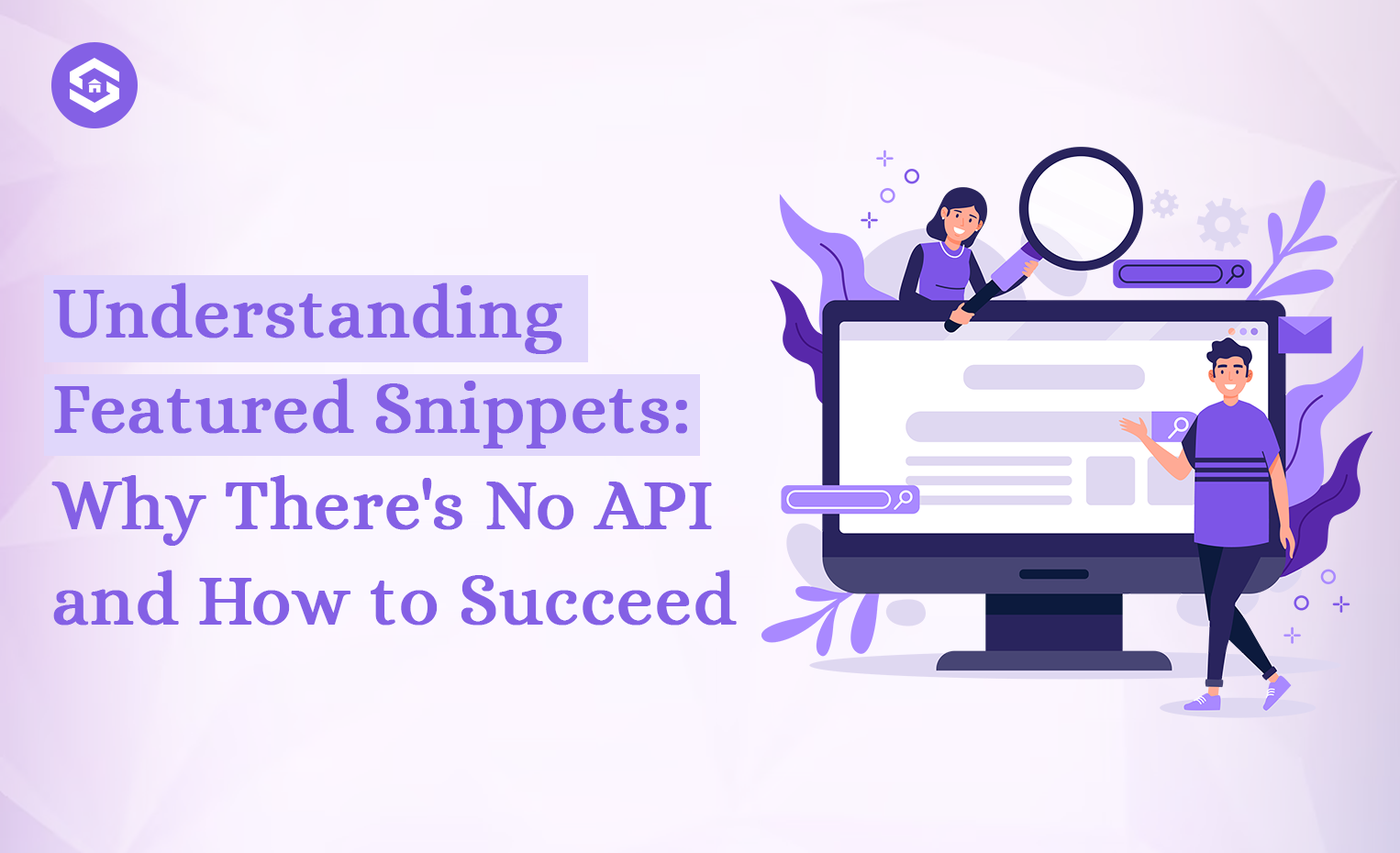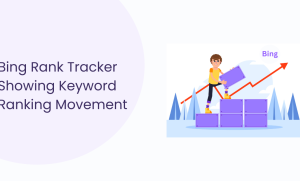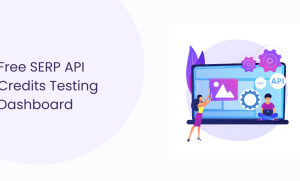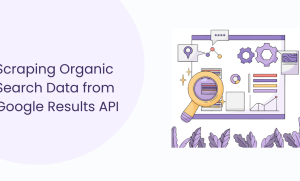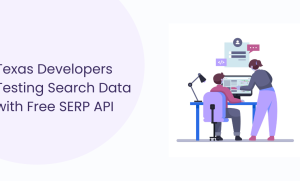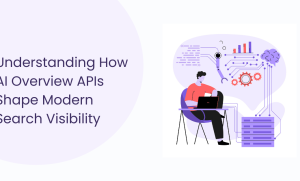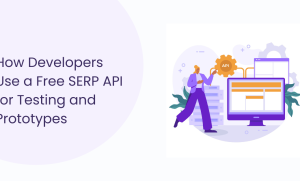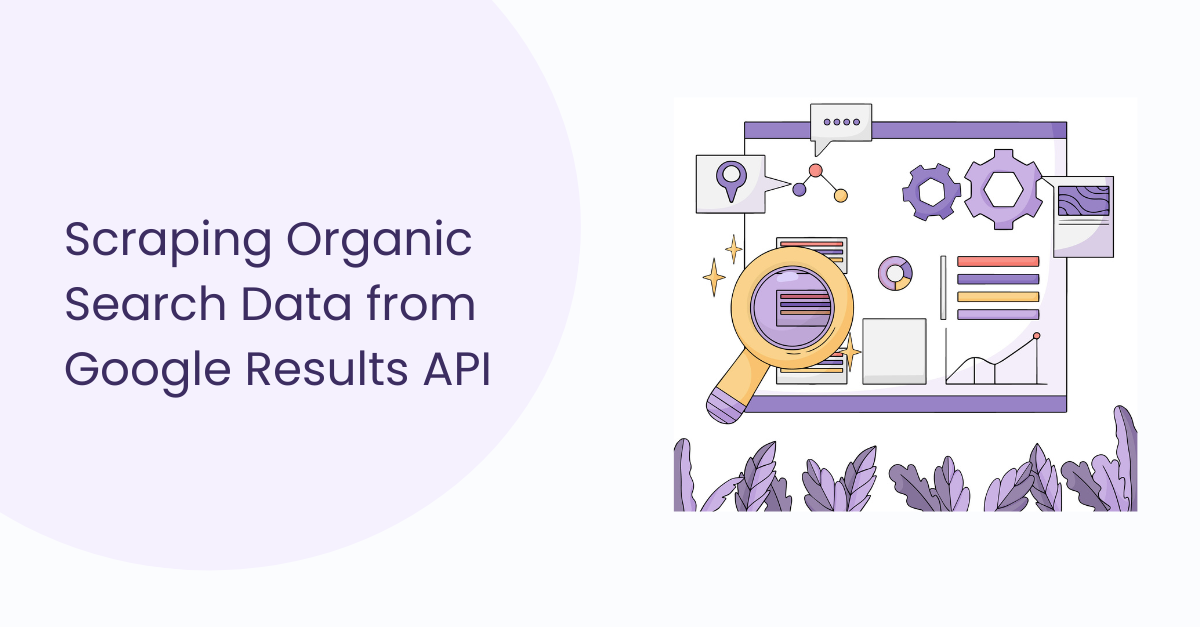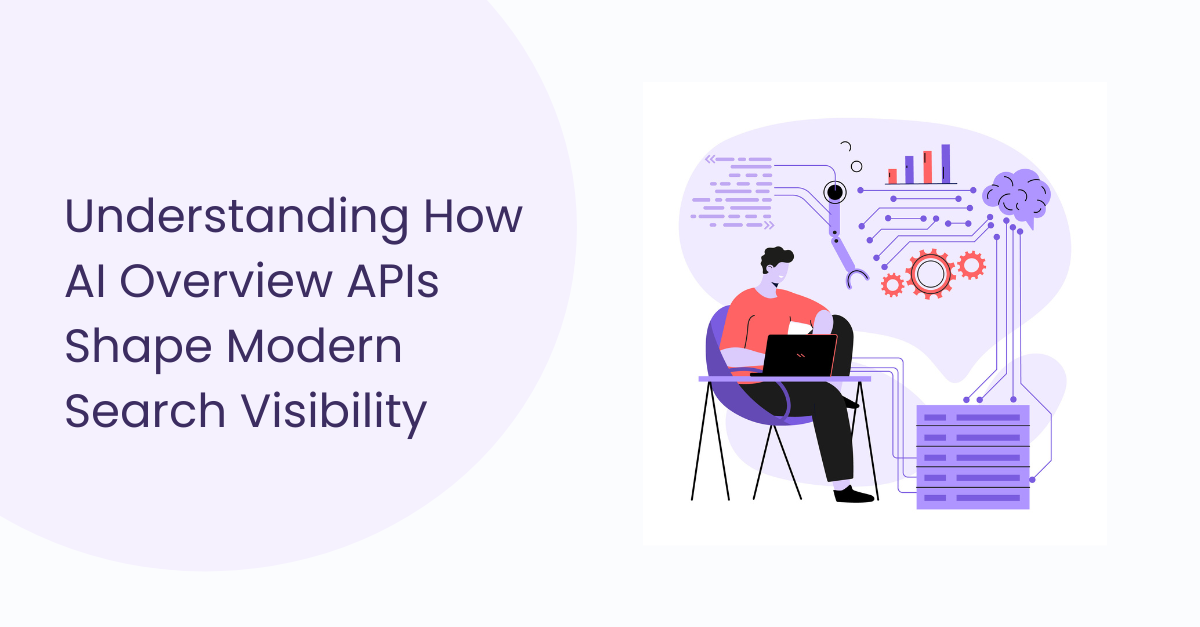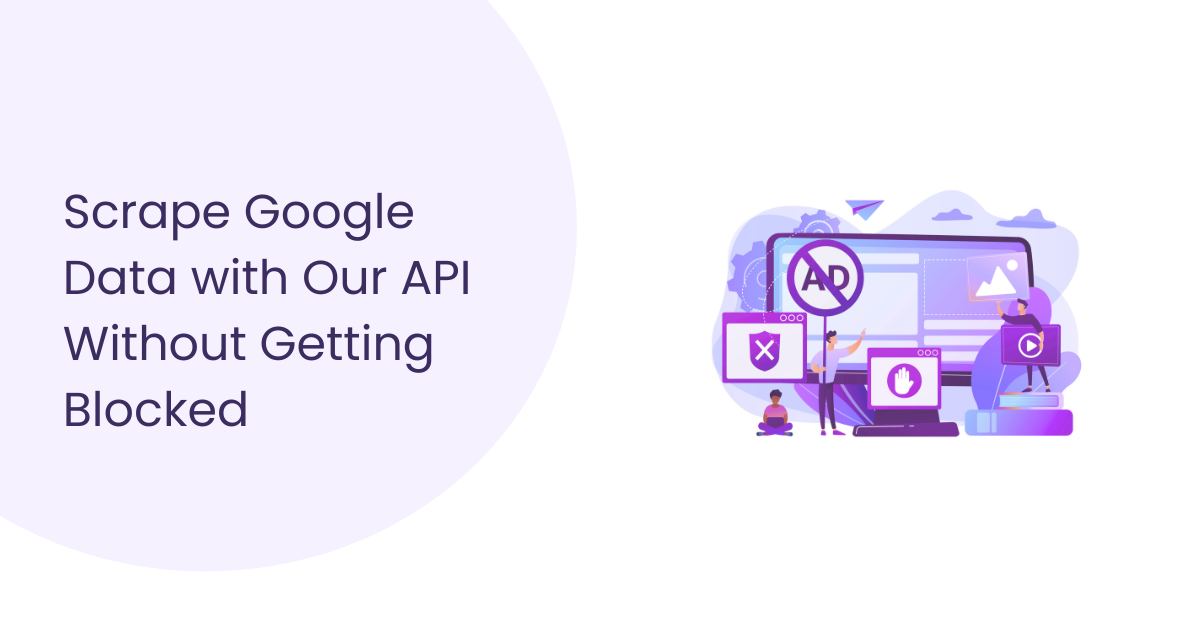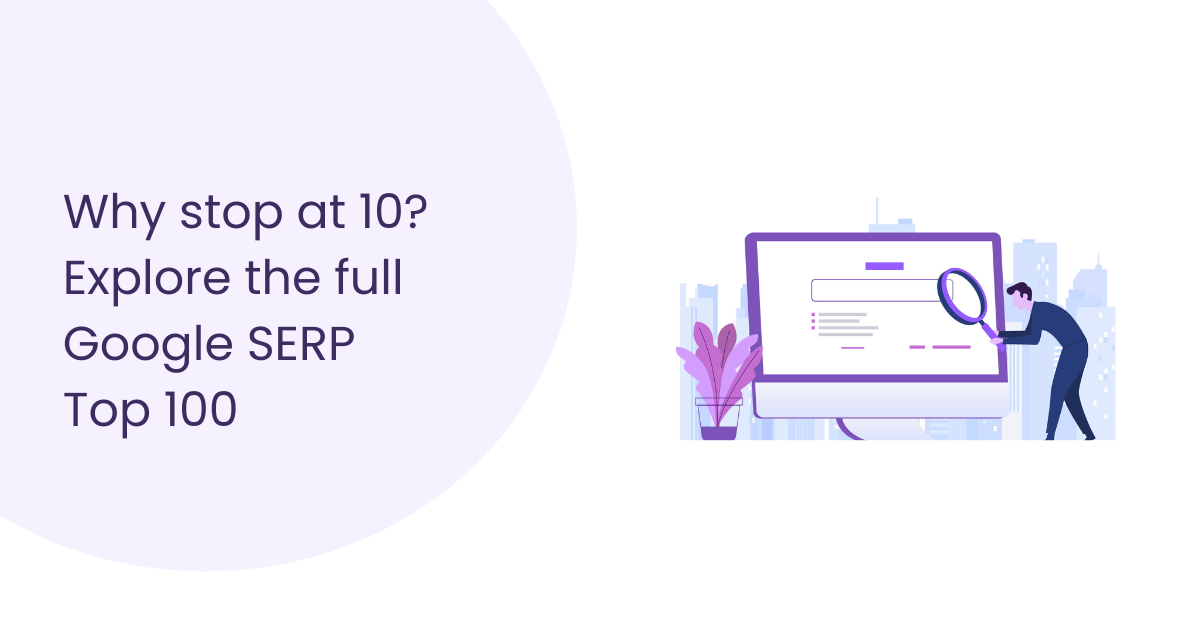Table of Contents
Table of Contents
Ever dreamt of instantly knowing which content on your website is eligible for a coveted Google Featured Snippet? Sounds like a marketer’s fantasy, right? Unfortunately, that dream remains just that – a fantasy.
Despite persistent rumours and wishful thinking, there is no official Google Featured Snippets API. Instead, you can try API for featured snippets. But no secret tool grants you direct access to this information. But why does this magical solution not exist? And more importantly, what can you do instead to optimize your content for those valuable SERP real estate?
Need Fast and Reliable SERP data: Try SERP API to extract valuable data from search engines. Let’s move forward.
Why You Can’t Cheat the System:
Here’s the reality: Google deliberately keeps the selection process for Featured Snippets opaque. This serves several purposes:
- Fairness and Quality: An API could be exploited to game the system, prioritizing quantity over quality and harming user experience.
- Algorithm Evolution: Google’s algorithms constantly evolve, making a static API outdated and unreliable.
- Transparency Concerns: Revealing the exact criteria could lead to black hat SEO tactics and manipulation of search results.
So, while the lack of an API might be frustrating, it’s ultimately for the greater good of search quality and user trust.
Don’t Despair, Optimize Instead:
While you can’t force your way into Featured Snippets, you can significantly improve your chances by understanding Google’s guidelines and implementing best practices. Here’s your action plan:
1. Understand User Intent:
Start by truly understanding what users search for when using specific keywords. Analyze search intent through tools like Google Trends and Answer the Public. Is it informational, navigational, transactional, or something else? Tailor your content to address that intent directly.
Example: For the keyword “how to change a tyre,” users are likely searching for instructional content. Create a well-structured guide with clear steps, images, and videos to cater to their intent.
2. Structure Your Content Clearly:
To summarise your content, use clear headings, subheadings, bullet points, and numbered lists. This makes it scannable and more accessible for Google to understand the key points.
Example: HubSpot saw a 33% increase in organic traffic after optimizing their blog posts with clear headings and subheadings, making their content more digestible for users and search engines.
3. Optimize for Readability:
Write in a concise and easy-to-understand manner. Aim for short sentences and an active voice, and avoid jargon. Consider using readability tools like Flesch-Kincaid Grade Level to ensure your content is accessible to a broad audience.
Example: Backlinko increased its organic traffic by 43% by simplifying its writing style and focusing on clarity. They reduced their average sentence length and eliminated complex vocabulary, making their content more user-friendly.
4. Answer the Question Directly:
Refrain from burying the answer within your text. Provide a clear and concise response to the user’s query within the first few paragraphs. This increases the likelihood of Google pulling that section for the Featured Snippet.
Example: Neil Patel recommends the “Inverted Pyramid” technique, where you answer the user’s question upfront and then elaborate with additional details. This ensures users get the information they need quickly.
5. Use Schema Markup:
Structured data markup like Schema helps Google understand the meaning and context of your content. Implement relevant Schema types like FAQPage, Recipe, or HowTo to enhance your chances of appearing in rich snippets.
Example: A study by Moz found that pages with Schema markup were 10% more likely to rank in the top 10 search results. Implementing Schema can give you a slight edge in the SERPs.
6. Track and Analyze Results:
Monitor your SERP performance using tools like SERPHouse to see which pages are already ranking for keywords with Featured Snippets. Analyze their content structure and format to identify patterns and optimize other pages accordingly.
Remember, Featured Snippets are not a guaranteed reward. However, focusing on user intent, clear structure, concise writing, and prosperous data implementation can significantly increase your chances of earning that top spot and boosting your organic traffic.
Beyond Focusing on Featured Snippets:
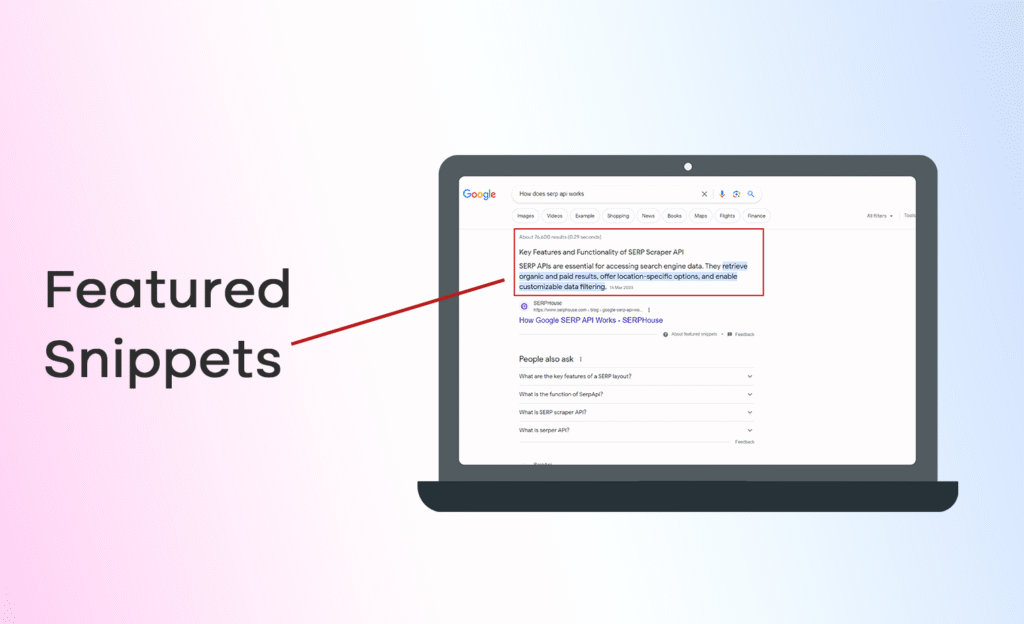
While Featured Snippets are valuable, keep them from becoming your sole SEO focus. Remember:
- Featured Snippets are dynamic: They can appear and disappear based on search context and Google’s algorithm updates.
- Focus on overall SEO: Optimize your website for broader search engine ranking factors like backlinks, domain authority, and page speed.
- Diversify your traffic sources: Utilize social media, content marketing, and other strategies to drive traffic beyond organic search.
By employing these strategies and diversifying your efforts, you can achieve sustainable SEO success without relying on the brief dream of a Featured Snippets API.
Consider exploring SERPHouse, a leading SERP API provider, for advanced tools and insights to enhance your SEO efforts further.
Their services can help you track rankings, monitor SERP features, and analyze competitor performance, providing valuable data to refine your strategy.
Ultimately, SEO is a marathon, not a sprint. By focusing on providing high-quality content and user experience, you lay the foundation for sustainable success, regardless of the presence or absence of Featured Snippets. Remember, the best way to win the SEO game is to understand and serve your audience honestly.
Conclusion: The Power of User-Centric SEO
The quest for a magical Featured Snippet API might be a dream, but it shouldn’t deter you from pursuing SEO success. Shifting your focus from quick fixes to genuine user-centric optimization unlocks a far more sustainable and rewarding path.
Remember, Google’s algorithms aim to deliver the best possible user experience. When you align your content creation and optimization efforts with that goal, you naturally increase your chances of not just grabbing Featured Snippets but achieving broader SEO success.
Here’s a final recap of the key takeaways:
- Ditch the API dream: Focus on providing exceptional content that caters to your audience’s needs and search intent.
- Understand your users: Leverage tools like Google Trends and Answer the Public to grasp their wants.
- Structure for clarity: Use headings, lists, and concise writing to make your content easily digestible for users and search engines.
- Answer directly: Don’t make users hunt for the answer – provide it upfront.
- Embrace Schema markup: Enhance your content’s meaning and context with relevant Schema types.
- Track and analyze: Use tools like SERPHouse to monitor progress and refine your strategy based on data.
- Go beyond Featured Snippets: Optimize for broader SEO factors like backlinks and technical SEO for long-term success.
Remember, SEO is a continuous journey, not a one-time destination. By consistently creating high-quality, user-focused content and staying updated on best practices, you can transform your website into a search engine magnet, attracting qualified traffic and achieving sustainable success.

